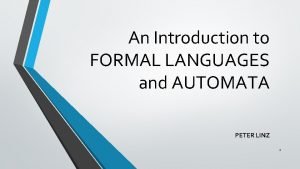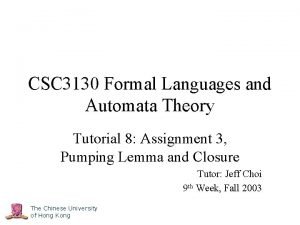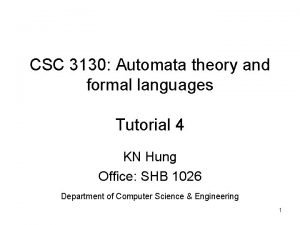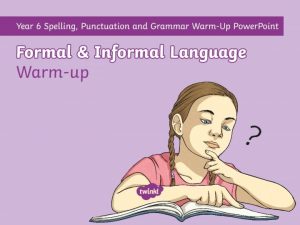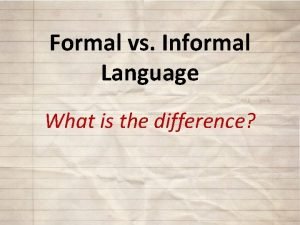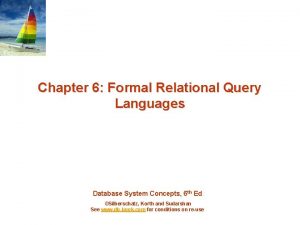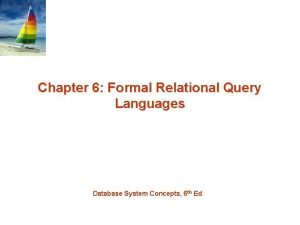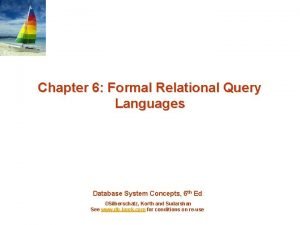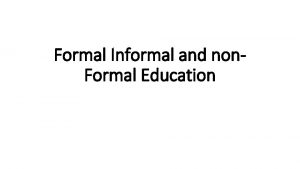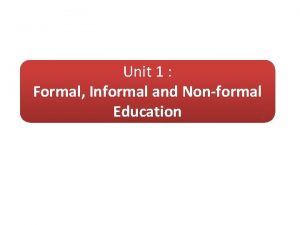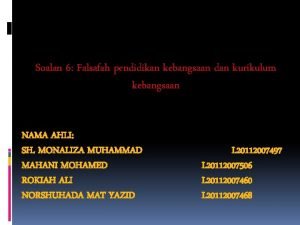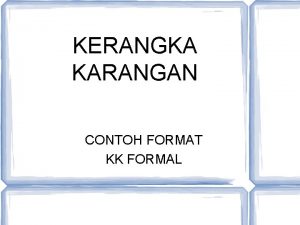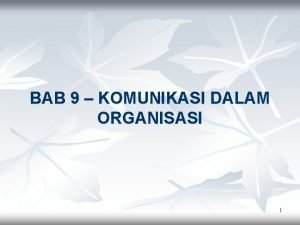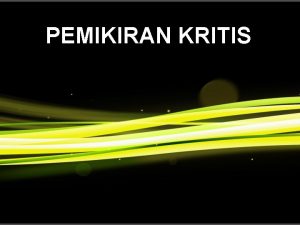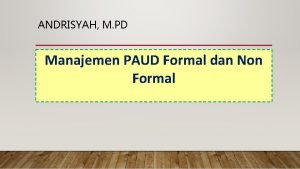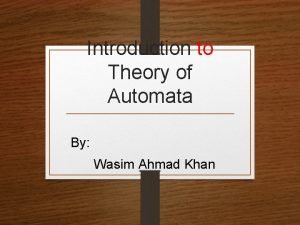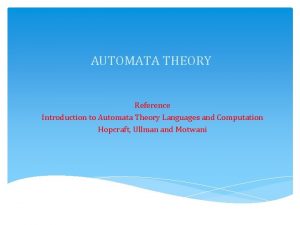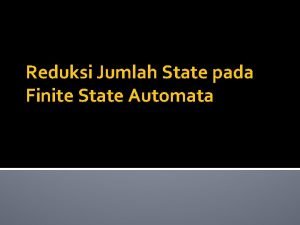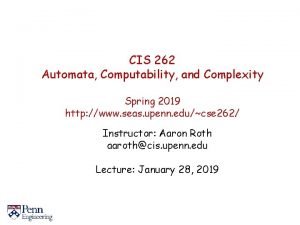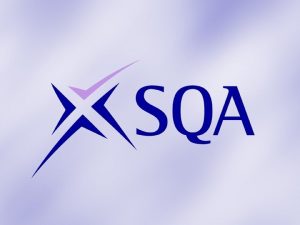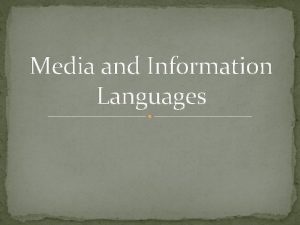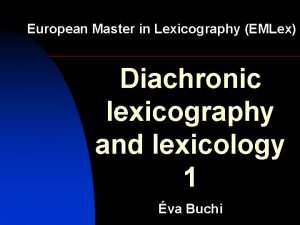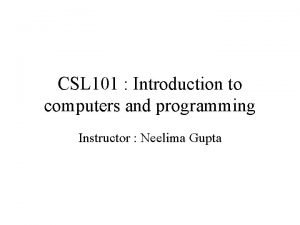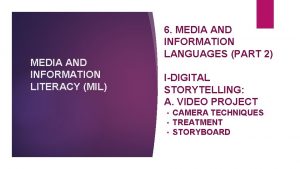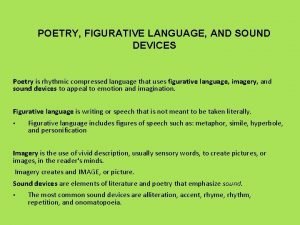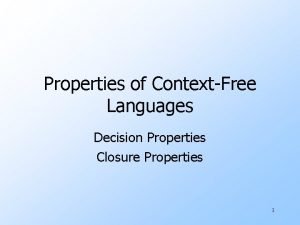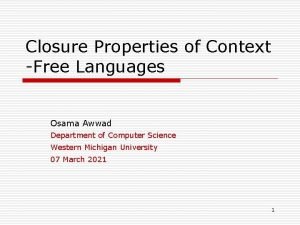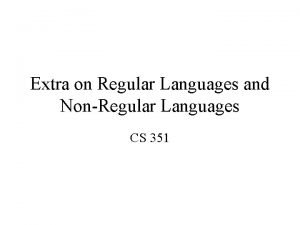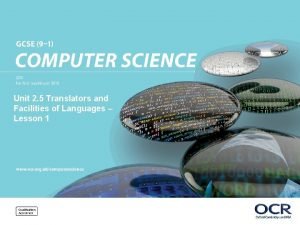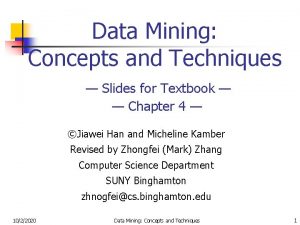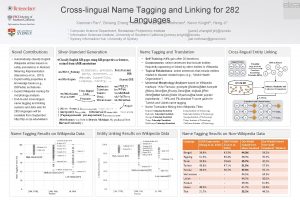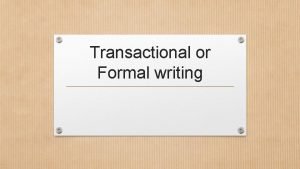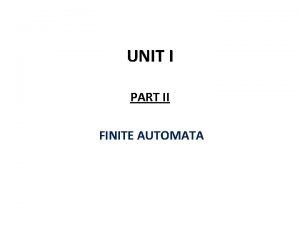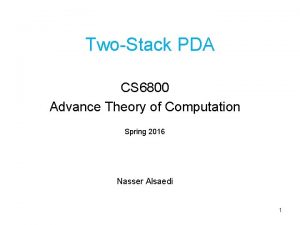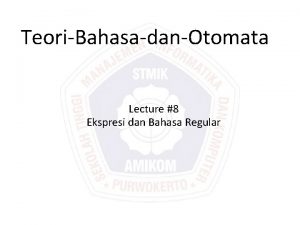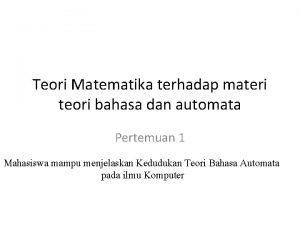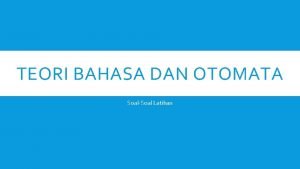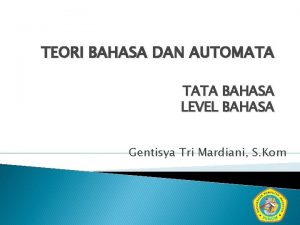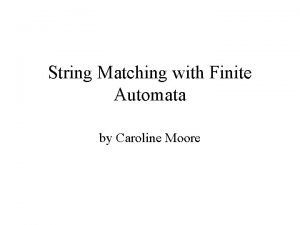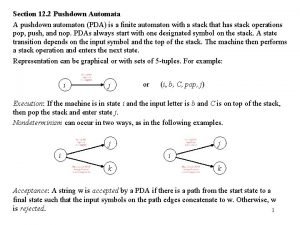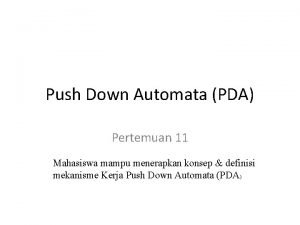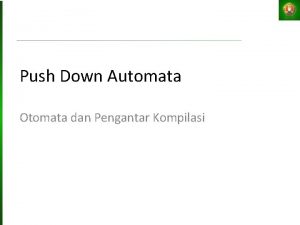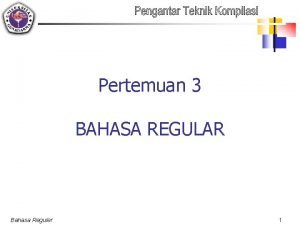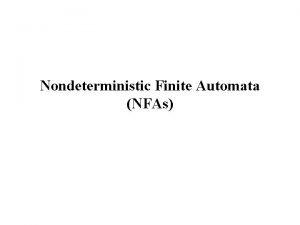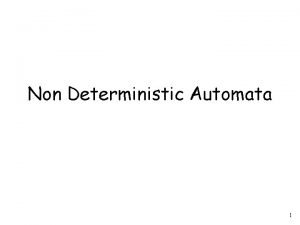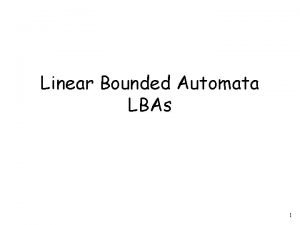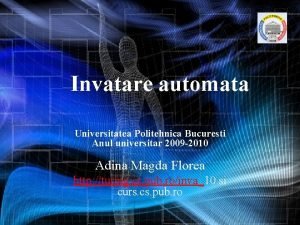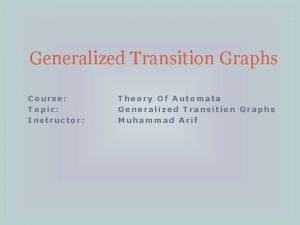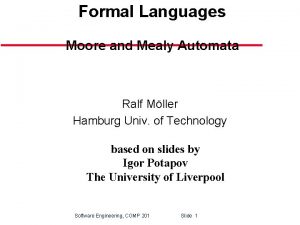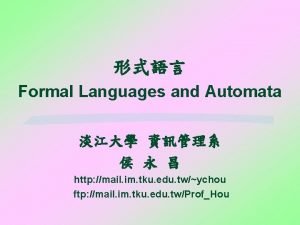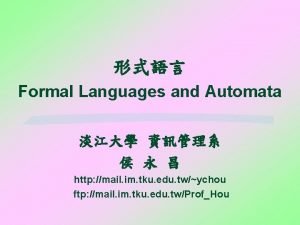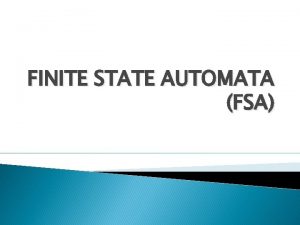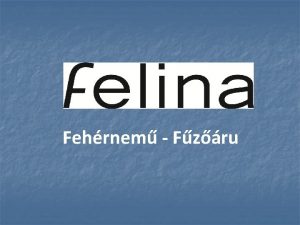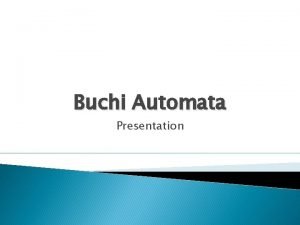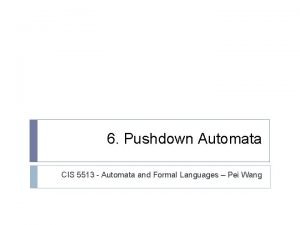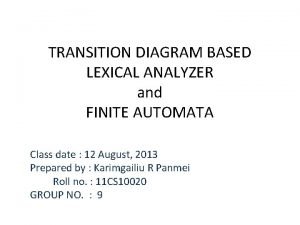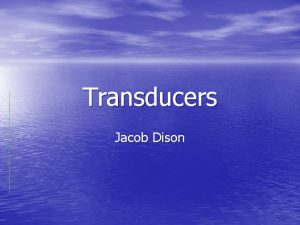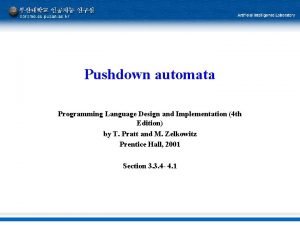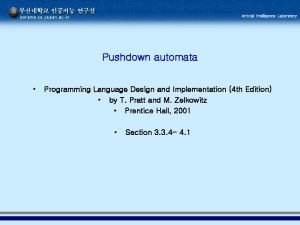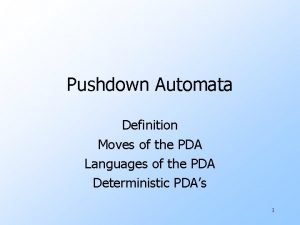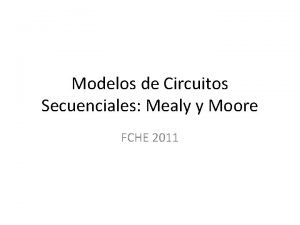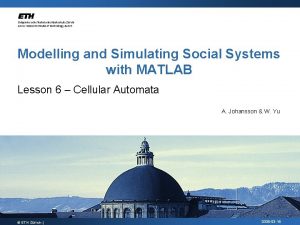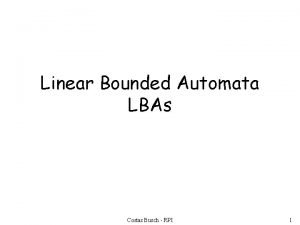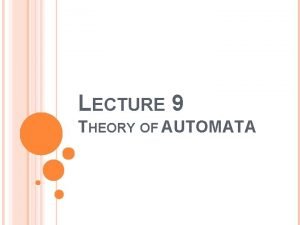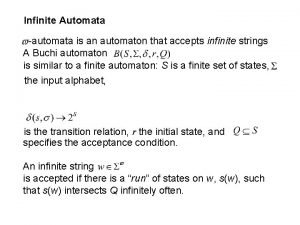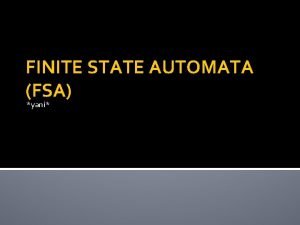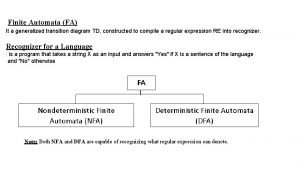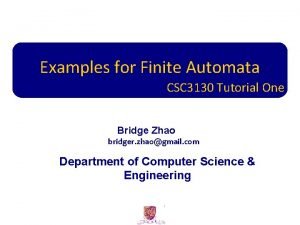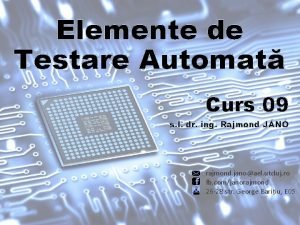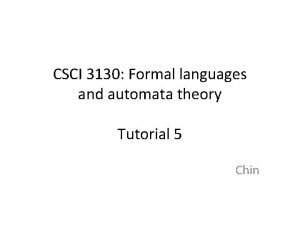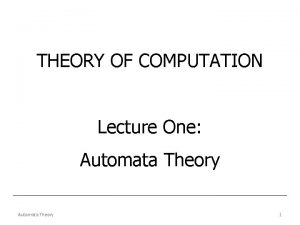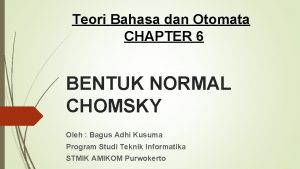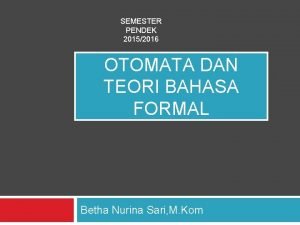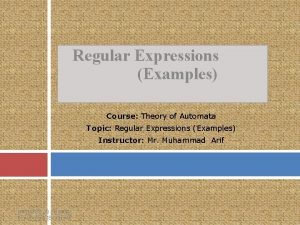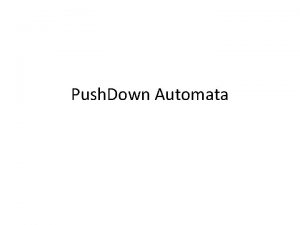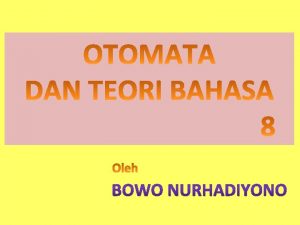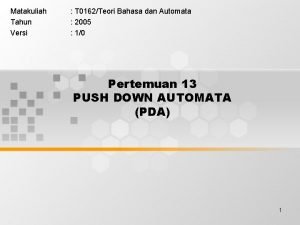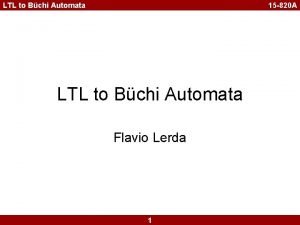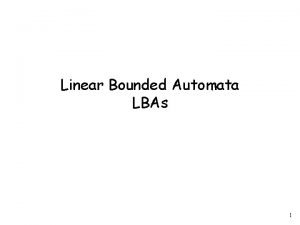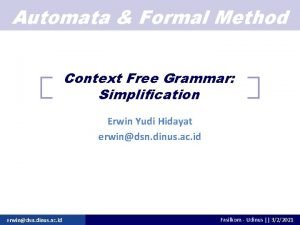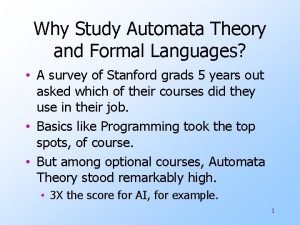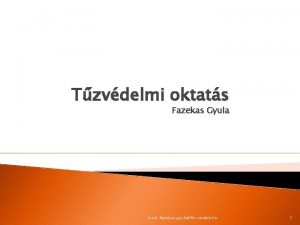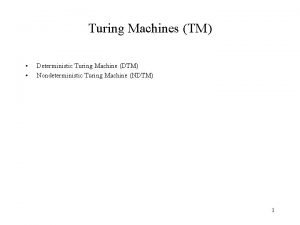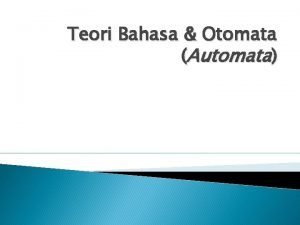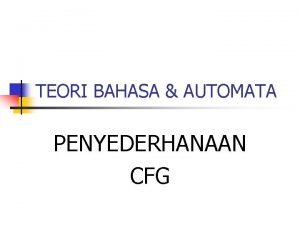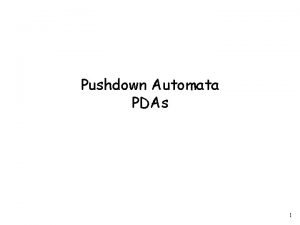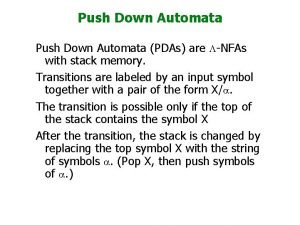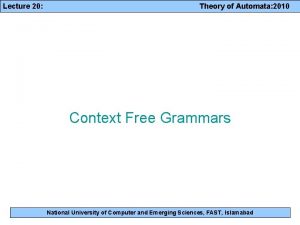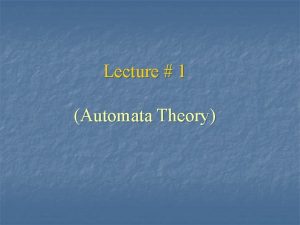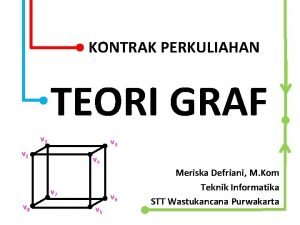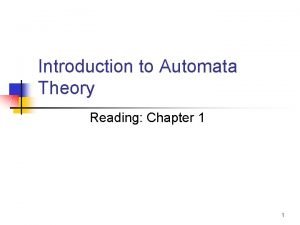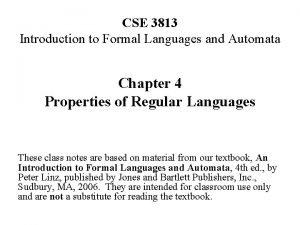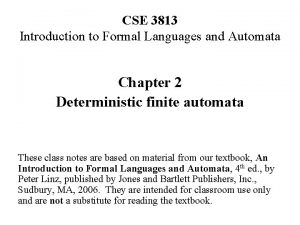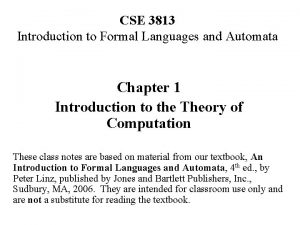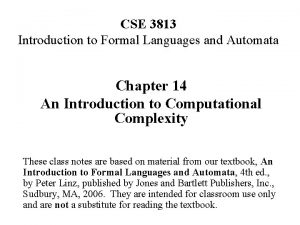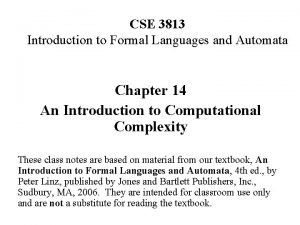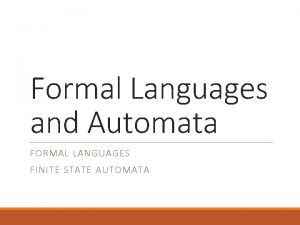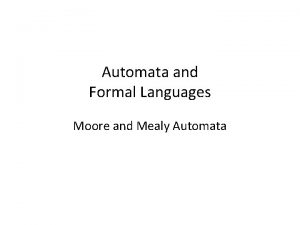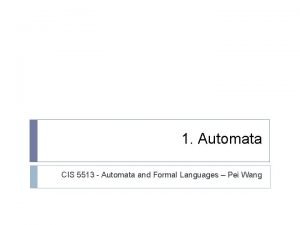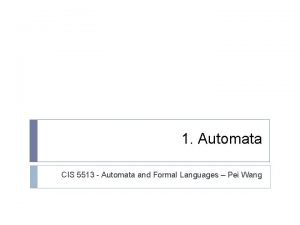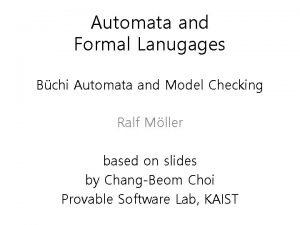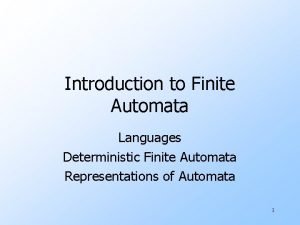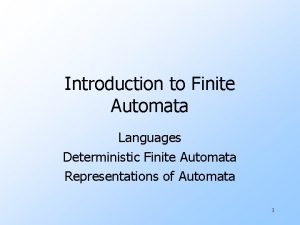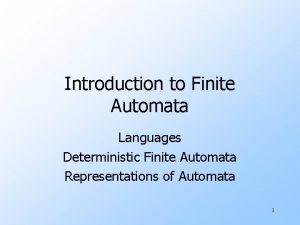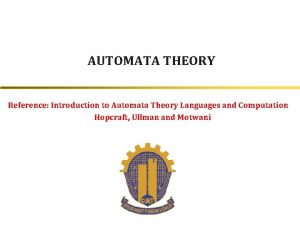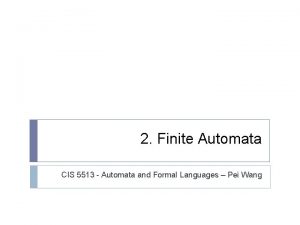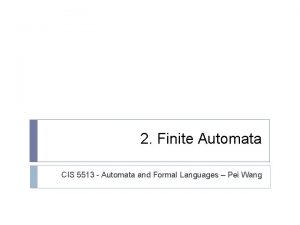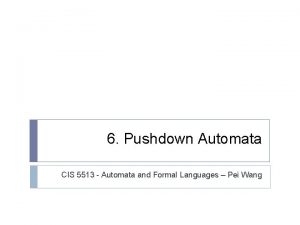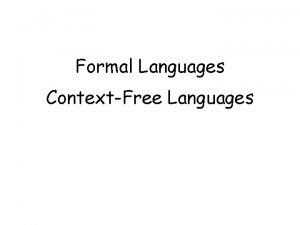CSE 3813 Introduction to Formal Languages and Automata






















































































































- Slides: 118

CSE 3813 Introduction to Formal Languages and Automata Chapter 9 The Standard Turing Machine These class notes are based on material from our textbook, An Introduction to Formal Languages and Automata, 4 th ed. , by Peter Linz, published by Jones and Bartlett Publishers, Inc. , Sudbury, MA, 2006. They are intended for classroom use only and are not a substitute for reading the textbook.

Diagrams from some slides are from previous year’s textbook: Martin, John C. , Introduction to Languages and the Theory of Computation. Boston: WCG Mc. Graw. Hill, 1991. Slides are for use of this class only.

Automata A Finite Automaton has only its states to serve as memory - very limited in what languages it could recognize In a Pushdown Automaton we added a stack to a Finite Automaton - this gave it better memory, and allowed it to recognize more languages. But it was still limited by the nature of the stack. We could add another stack to a Pushdown Automaton. This would allow it to accept some non-context free languages (e. g. , anbncn). Or we could change the stack to a queue. This would allow other languages to be accepted (e. g. , ww).

All of the automata we study in this class have a finite number of states. They differ in the “auxiliary memory” they have and how it is organized. DFA NFA finite memory DPDA infinite stack memory Turing machine infinite tape memory (tape can be read forwards and backwards without erasing)

Hierarchy of automata DTM, NTM LBA PDA DFA, NFA

The Turing Machine Alan Mathison Turing, b. 1912, d. 1954. Contributed much to the foundations of computing theory. Published the Turing machine model in 1937. Church-Turing Thesis - “Any algorithmic procedure that can be carried out by a human, a team of humans, or a machine can be carried out by some Turing machine. ” Unproveable, because we don’t have a precise definition of what “algorithmic procedure” means, but generally accepted as true. Puts a limit on what can be computed.

The Church-Turing Thesis • No model of digital computation is more powerful than a Turing machine. • By “more powerful, ” we mean “can recognize languages that a TM cannot recognize. ” • This is not something that can be proved. But everybody believes it because no one has been able to devise a more powerful model of computation.

Definition: Turing Machine A Turing machine (TM) is a 7 -Tuple T = (Q, S, , , q 0, , F), where Q = a finite set of states not containing h (the halt state) S = a finite set of symbols constituting the input alphabet; S – { } = a finite set of symbols constituting the tape alphabet = the transition function: Q Q {L, R} q 0 = the start state (q 0 Q) is a special symbol, the blank symbol F Q is the set of final states

Definition: Turing Machine Turing machines can be thought of as a finite state automaton with slightly different labels on the arcs, plus a tape as auxiliary memory, and a tape head (or read-write head). Δ 1 0 0 1

Definition: Turing Machine The tape on a Turing machine can be thought of as a linear structure marked off into squares or cells. It is usually defined as infinite in both directions, but may be thought of as bounded on the left side, but infinite on the right.

Definition: Turing Machine Each cell on the tape on a Turing machine can hold: • a symbol from the input alphabet, or • a symbol from the tape alphabet (which may include some symbols which are not in the input alphabet), or • a blank symbol , which is distinct from the input alphabet.

Standard Turing Machine The standard Turing machine described by our textbook has several features: The TM has a tape that is unbounded in both directions. The TM is deterministic in the sense that defines at most one move per configuration There is no special input file; the input is copied onto the tape. There is no special output device; the tape contains the output, if any.

The TM tape head • The Turing machine has a tape head which reads from and writes to the tape during each move. • The tape head can move right or left, or may stay in the same position. • The tape head can read a character from the cell under which it is positioned, or it may write a character to the cell.

The TM transition function has the following form: (q, X) = (r, Y, D) This says that: • when the TM is in state q, and • the read-write head reads a certain symbol (X) off the tape, then the TM will: • change state to state r, • write a Y onto the tape, and • move in direction D.

The TM transition function For example, (q 1, b) = (q 2, , R) means: • we are currently in state q 1; • read the cell above the tape head; it’s a b. OK, great. Now we: • change state to q 2, • write a blank, • and move right.

The TM transition function can be represented in the form of a table:

The TM transition function • We can label the arcs of a finite state machine to indicate the moves of the TM: / , R q 0 a b q 1 a

Processing a string • To process a string, we place the string onto the tape, where it can be read by the read-write head, surrounded by blank symbols on the left and right ends of the input. • Once the string is on the tape, then processing can begin. • We don’t need a separate input string after that.

Accepting a string There is only one way that a string may be accepted by a TM: • If a move causes the machine to move into an accepting halt state, then we stop and accept the string. (There are no moves out of a halt state. ) This may occur even when we haven’t finished processing the string yet.

Accepting a string For example, if our TM is processing all the strings that have aabb in them somewhere, the TM may halt in an accepting state after processing the 6 th character of this string: bbaaaabbbb

Accepting a string If T = (Q, S, , , q 0, , F) is a Turing machine, and w S+, then w is accepted by T if, starting in the initial configuration corresponding to input w, T eventually enters a final acceptance state and halts.

Accepting a string In other words, w is accepted if there exists y and z * so that q 0 w |-T* yqfz, for some qf F In this situation, we say that T halts on input w. The language accepted by T is the set L(T) of input strings on which T halts.

Crashing and Halting There are 2 ways a string may fail to be accepted by a TM: • Crashing • Looping If the TM crashes, the string is explicitly rejected. If the TM loops forever, the string is implicitly rejected.

Crashing and Halting Crashing a. If a symbol is found on the tape for which the transition function is undefined, and the current state is not the accepting halt state, then we crash. b. If our TM has a bounded left end, and a move is specified which causes the machine to move off of the left end of the tape, then we crash.

Crashing and Halting Looping If an input string causes the TM to enter an infinite loop, then we loop forever.

Exercises Design a TM that accepts L = {anbn | n 1} To do this, we can construct the transition table for the TM. We can use a matrix as a short-hand representation:

{anbn | n 1} a q 0 q 1, x, R q 1, a, R q 2, a, L q 3 q 4 b x y Δ q 3, y, R q 2, y, L q 1, y, R q 0, x, R q 2, y, L q 3, y, R q 4, Δ, R

Another Turing Machine Example Turing machine for the language

Time 0

Time 1

Time 2

Time 3

Time 4

Time 5

Time 6

Time 7

Time 8

Time 9

Time 10

Time 11

Time 12

Time 13 Halt & Accept

Observation: If we modify the machine for the language we can easily construct a machine for the language

Formal Definitions for Turing Machines

Transition Function

Transition Function

Turing Machine: Input alphabet Tape alphabet States Transition function Final states Initial state blank

Configuration Instantaneous description:

Time 4 A Move: Time 5

Time 4 Time 5 Time 6 Time 7

Equivalent notation:

Initial configuration: Input string

The Accepted Language For any Turing Machine Initial state Final state

Standard Turing Machine The machine we described is the standard: • Deterministic • Infinite tape in both directions • Tape is the input/output file

Computing Functions with Turing Machines

A function Domain: has: Result Region:

A function may have many parameters: Example: Addition function

Integer Domain Decimal: 5 Binary: 101 Unary: 11111 We prefer unary representation: easier to manipulate with Turing machines

Definition: A function is computable if there is a Turing Machine such that: Initial configuration Final configuration initial state For all final state Domain

In other words: A function is computable if there is a Turing Machine such that: Initial Configuration For all Final Configuration Domain

Example The function is computable are integers Turing Machine: Input string: Output string: unary

Start initial state The 0 is the delimiter that separates the two numbers

Start initial state Finish final state

The 0 helps when we use the result for other operations Finish final state

Turing machine for function

Execution Example: Time 0 (2) Final Result

Time 0

Time 1

Time 2

Time 3

Time 4

Time 5

Time 6

Time 7

Time 8

Time 9

Time 10

Time 11

Time 12 HALT & accept

Another Example The function is computable is integer Turing Machine: Input string: unary Output string: unary

Start initial state Finish final state

Turing Machine Pseudocode for • Replace every 1 with $ • Repeat: • Find rightmost $, replace it with 1 • Go to right end, insert 1 Until no more $ remain

Turing Machine for

Start Example Finish

Another Example if The function is computable if

Turing Machine for if if Input: Output: or

Turing Machine Pseudocode: • Repeat Match a 1 from Until all of or with a 1 from is matched • If a 1 from is not matched erase tape, write 1 else erase tape, write 0

Combining Turing Machines

Block Diagram input Turing Machine output

Example: if if Adder Comparer Eraser

Exercises Work through the processing of the string w = aaabbb in class. Is this string accepted by the TM? Work through the processing of the string w = aaabb. Is this string accepted by the TM? How does the TM reject the string?

Exercises n Recall that the following languages are not context-free. – {anbncn | n 0} – {ww | w {a, b}*} n In English, describe how a Turing machine could accept each of these languages n Try to draw the transition diagrams for the Turing machines

{anbncn | n 1} a q 0 q 1 x. R q 1 a. R q 2 q 3 q 4 q 5 b x y z Δ q 4 y. R q 2 b. R q 3 a. L c q 3 b. L q 1 y. R q 3 z. L q 2 z. R q 0 x. R q 3 y. L q 3 z. L q 4 y. R q 4 z. R q 4ΔR

Homework Suggestions n P. 236 -237 2, 3, 5, 7(a, b)

Model of computation n. A TM is an abstract model of a computer that lets us define in a precise, mathematical way what we mean by computation. n As before, we use the concept of a “configuration” to define what we mean by computation.

Configuration A configuration of a TM is a pair, (q, xay) where q is a state, x and y are strings, and a is the symbol at the current position of the tape head. We sometimes use (q, xw) To indicate that the tape head is under the first symbol in the string w.

Configuration n. A configuration of a TM includes everything we need to know to continue a computation – current state – symbol currently under the tape head – string on tape to left of the head – string on tape to right of the head (up to rightmost non-blank symbol) n Example – (q, bbabbba )

Computation n. A computation is a sequence of configurations such that each configuration is obtained from the previous configuration by some transition of the TM n Given input string aabb, the TM that accepts the language a*b* begins a computation as follows: (s, aabb ) |- (s, AAbb ) |- … n Continue this computation to the end

Example: Here is the TM to process the language consisting of strings containing any number of a’s, with a single b at the end. / , R b / b, R q 1 q 0 q 2 h a / a, R a a a b

Example: An FA that accepts {a, b}* {aba} {a, b}*

Example: A TM that accepts {a, b}* {aba} {a, b}*

Example: An FA that accepts {a, b}* {aba}

Example: A TM that accepts {a, b}* {aba}

Example: A TM that accepts pal, the palindrome language:

A TM that accepts strings of L = {ss}:

Computable A function f with domain D is said to be Turing-computable or just computable if there exist some Turing machine M = (Q, S, , , q 0, , F) such that q 0 w |-M* qf f(w), for all w D. qf F,

Combining Turing Machines You can combine several smaller TMs in order to make a larger, more complicated TM. The composite of two different TMs, T 1 and T 2, is written as T 1 T 2. It would be represented as: T 1 T 2 What happens is that T 1 T 2 begins by executing the moves of T 1, up to the point where T 1 would halt. Instead of halting, T 1 T 2 moves to the initial state of T 2, where it begins executing the moves of T 2. If T 2 halts, then T 1 T 2 halts. If T 1 or T 2 crashes, then T 1 T 2 crashes.

Combining Turing Machines You can also make the transition to T 2 conditional. a T 1 T 2 Here, T 1 would execute its moves up to the point where it would normally halt. If the symbol on the tape at that point is an a, then T 1 T 2 will begin executing the moves of T 2. Otherwise T 1 T 2 will crash.

Designing complex Turing machines n The book describes a “language” for combining simple TMs into complex ones, using the sequence, branching, and looping operators of imperative programming languages. n If you were going to be a Turing machine programmer, this would be useful. But …. n So, you will not be tested on this. But you need to understand how a Turing machine works and how to design simple ones.

Computing functions We use automata to recognize languages and compute functions (although we haven’t talked about computing functions until now). n In fact, computing functions allows language recognition, since every language can be represented by a characteristic function – if the input string is in the language, output 1 – otherwise output 0 n

String and numeric functions n n A TM can compute functions on strings. Given an input string, the output of the function is the string left on the tape after the TM halts. A TM can also compute numeric functions. Using a binary alphabet for strings, the input string can represent a binary number and the output string can represent a binary number. A TM can compute a function with multiple arguments. Each argument is separated by a blank on the tape. We can create TMs that compute arithmetic functions such as addition, subtraction, multiplication, etc.

Computing a Partial Function A Turing Machine can compute a function by leaving a string on the tape when it enters the halt state. A partial function f on S*may be undefined at certain points (the points not in the domain of f). A total function enters the halt state for all inputs in the domain. We say that a TM, T, computes f if T halts where f is defined and fails to halt elsewhere. So f is Turingcomputable, or just computable, if there exists some TM computing f.

Computing a numerical function We can represent numbers on a TM by using the unary representation, which just uses n 1’s to represent the number n. Example: 11111 = 5 We can construct a TM to concatenate two strings together. If we represent two numbers in unary form, then a TM which concatenates these two strings is actually performing addition!

Computing a numerical function n The addition of two numbers is as simple as the concatenation of two strings. n Assume two integers are represented in unary form on the tape of a Turing machine. n Assume the two integers are separated by a 0 between them. n Design a Turing machine that will add these two numbers.

Computing a numerical function

Characteristic Function Computing the characteristic function L is very similar to accepting a language. The TM must always halt. The TM will leave a 1 on the tape if the string is accepted, and a 0 otherwise. HOWEVER: A TM can accept a language if it halts on all strings that are in the language, but doesn't halt on strings which are not.

Characteristic function: In a standard TM, strings which are not accepted can cause the TM to: • crash if it enters a state where there are no transitions for the current tape symbol, • crash if it tries to move left at the left end of the tape, or • get into an infinite loop, A TM computing the characteristic function must halt on all inputs

Conclusion Anything that is effectively calculable can be executed on a TM. A universal TM can compute anything that any other Turing machine can compute. The universal TM is itself a standard TM. A CPU with RAM is a finite version of a TM; it has the power of a TM up to the point that it runs out of memory. Languages or hardware that provides compares, loops, and increments are termed Turing complete and can also compute anything that is effectively calculable.
 An introduction to formal languages and automata
An introduction to formal languages and automata Csci3130
Csci3130 Formal languages and automata theory tutorial
Formal languages and automata theory tutorial Csc3130
Csc3130 Csci 3130
Csci 3130 Formal languages and automata theory tutorial
Formal languages and automata theory tutorial Cse 340 principles of programming languages
Cse 340 principles of programming languages Vineeth kashyap
Vineeth kashyap Formal and informal vocabulary
Formal and informal vocabulary What's formal language
What's formal language Formal relational query languages
Formal relational query languages Formal relational query languages
Formal relational query languages Grouping in relational algebra
Grouping in relational algebra Language
Language Introduction to programming languages
Introduction to programming languages Informal curriculum
Informal curriculum Unit 1 formal informal and non formal education
Unit 1 formal informal and non formal education Formal and non formal education venn diagram
Formal and non formal education venn diagram Culto e inculto
Culto e inculto Peranan kurikulum kebangsaan
Peranan kurikulum kebangsaan Contoh topik dan tema
Contoh topik dan tema Pola komunikasi ke bawah
Pola komunikasi ke bawah Falasi
Falasi Pengkayaan kerja
Pengkayaan kerja Aap1 linguagem e oralidade
Aap1 linguagem e oralidade Fungsi manajemen paud
Fungsi manajemen paud Length of a string in automata theory
Length of a string in automata theory Central concept of automata theory
Central concept of automata theory Untuk pasangan state yang berarti tidak dapat dibedakan
Untuk pasangan state yang berarti tidak dapat dibedakan Automata, computability, and complexity
Automata, computability, and complexity Real-time systems and programming languages
Real-time systems and programming languages Cs 421
Cs 421 Languages for life and work
Languages for life and work Importance of media and information languages
Importance of media and information languages Difference between phase and pass
Difference between phase and pass Proto language
Proto language Defence centre for languages and culture
Defence centre for languages and culture Strongly typed vs weakly typed
Strongly typed vs weakly typed List the primitives that specify a data mining task.
List the primitives that specify a data mining task. Performance task for media and information literacy
Performance task for media and information literacy Advantages of high level language
Advantages of high level language Rhyme
Rhyme Real-time systems and programming languages
Real-time systems and programming languages Decision properties of context free languages
Decision properties of context free languages Cfg closed under intersection
Cfg closed under intersection Regular and irregular languages
Regular and irregular languages Translators and facilities of languages
Translators and facilities of languages Tandem language
Tandem language Cs 421 uiuc
Cs 421 uiuc Data mining languages and system architecture
Data mining languages and system architecture Boliang zhang
Boliang zhang Email writing topics
Email writing topics Introduction (writing)
Introduction (writing) Dfa stands for in automata
Dfa stands for in automata Two-stack pda examples
Two-stack pda examples Regex tool
Regex tool Bahasa automata
Bahasa automata Contoh soal fsa dan jawabannya
Contoh soal fsa dan jawabannya Hierarki chomsky
Hierarki chomsky Automata
Automata Pushdown automata
Pushdown automata What is recursive language
What is recursive language Contoh pda
Contoh pda Contoh push down automata
Contoh push down automata Grammar expressions
Grammar expressions Finite automata
Finite automata Convert nfa to dfa
Convert nfa to dfa Linear bounded automaton
Linear bounded automaton Invatare automata
Invatare automata Generalized transition graph in automata examples
Generalized transition graph in automata examples Mealy state machine
Mealy state machine Npda automata
Npda automata Simple grammar automata
Simple grammar automata Diagram fsa
Diagram fsa Felina hungária kft
Felina hungária kft History of buchi
History of buchi Pda to cfg
Pda to cfg Lexical analysis finite automata
Lexical analysis finite automata Dfa state diagram generator
Dfa state diagram generator Bidirectional transducers in automata theory
Bidirectional transducers in automata theory Design pushdown automata
Design pushdown automata Pushdown automata implementation
Pushdown automata implementation Automata definition
Automata definition Regular expression algorithm
Regular expression algorithm Modelo de mealy
Modelo de mealy Cellular automata matlab
Cellular automata matlab Linear bounded automata
Linear bounded automata Concatenation of two finite automata examples
Concatenation of two finite automata examples Automata
Automata Fsa diagram
Fsa diagram Fa it
Fa it Automata
Automata Testare automata
Testare automata Csci 3130
Csci 3130 Automata theory
Automata theory Automata theory
Automata theory Bentuk normal chomsky
Bentuk normal chomsky Tabel transisi dfa
Tabel transisi dfa Is regular expression a language
Is regular expression a language Automata
Automata Contoh fsa
Contoh fsa Push down automata (pda) didefinisikan dengan
Push down automata (pda) didefinisikan dengan Ltl to buchi automata
Ltl to buchi automata Linear bounded automata
Linear bounded automata Aaaaaabb
Aaaaaabb What is unit production in automata
What is unit production in automata Why we study automata theory
Why we study automata theory Automata tűzoltó készülék
Automata tűzoltó készülék Define deterministic turing machine
Define deterministic turing machine Fungsi automata
Fungsi automata Cfg simplification
Cfg simplification Automata
Automata Npda
Npda Automata
Automata Useless production in automata
Useless production in automata Reverse of a string in automata theory
Reverse of a string in automata theory Teori bahasa automata
Teori bahasa automata Taylor lessard
Taylor lessard Turing machine algorithm
Turing machine algorithm
